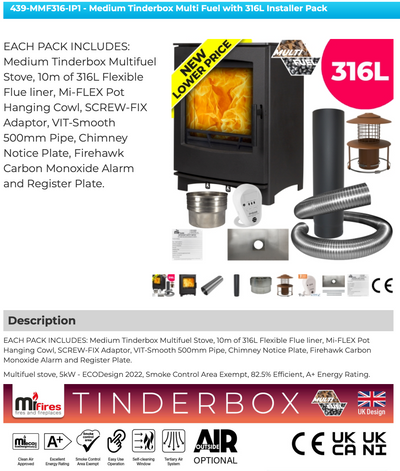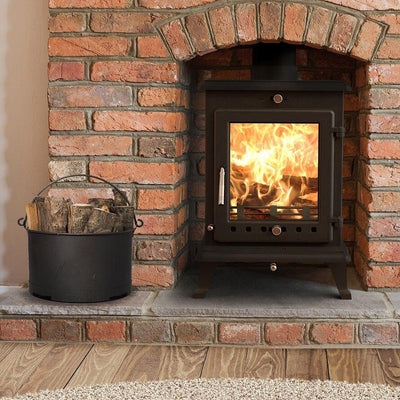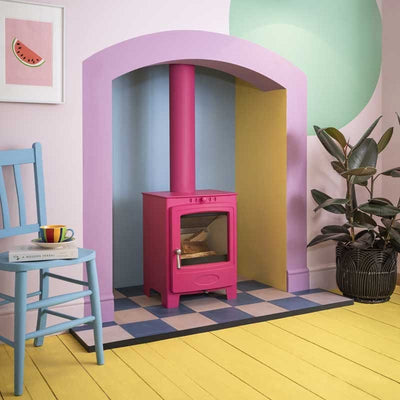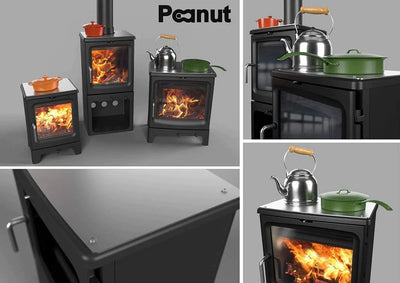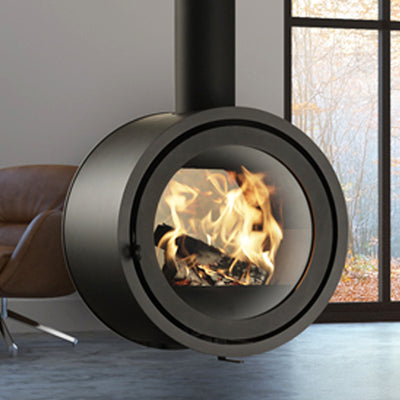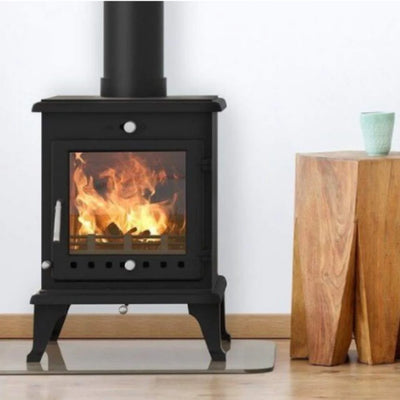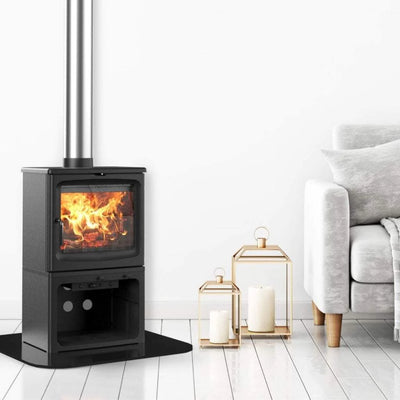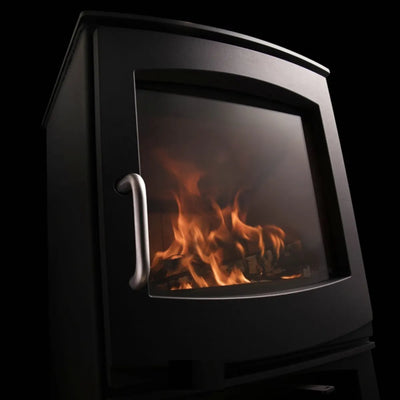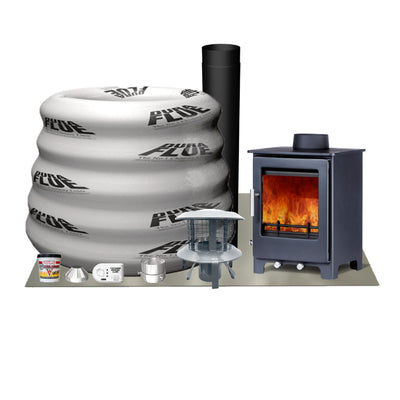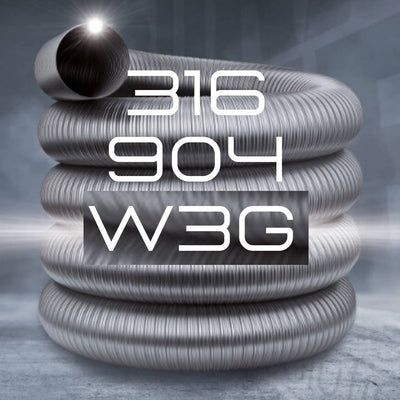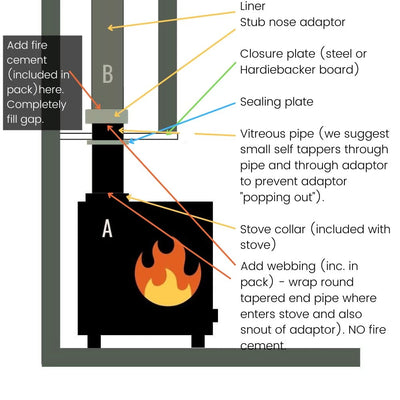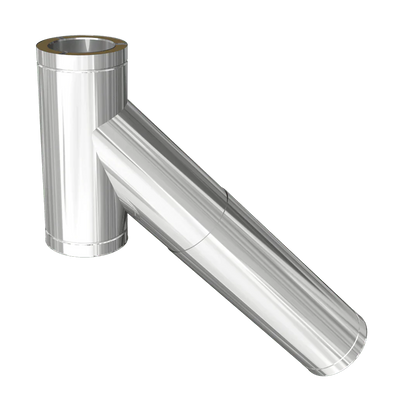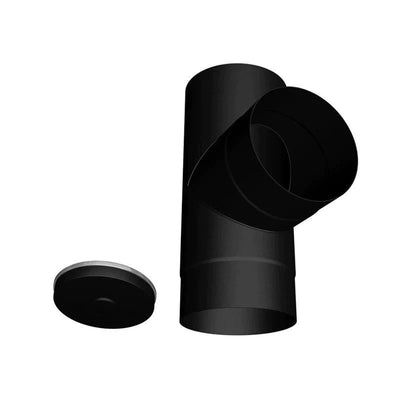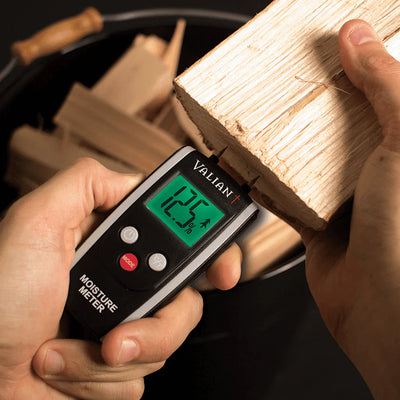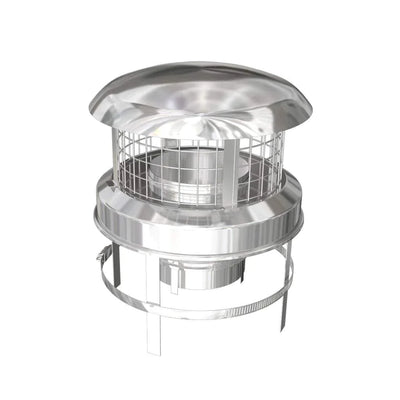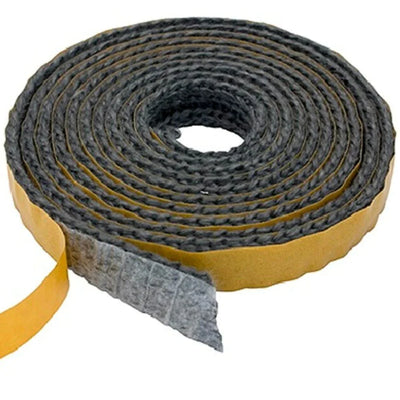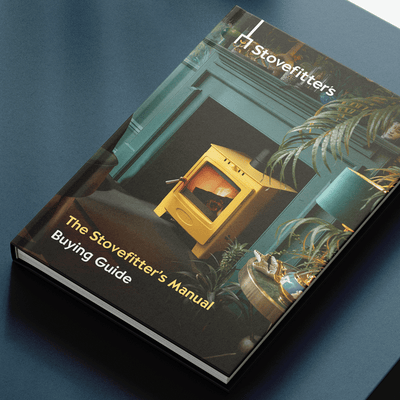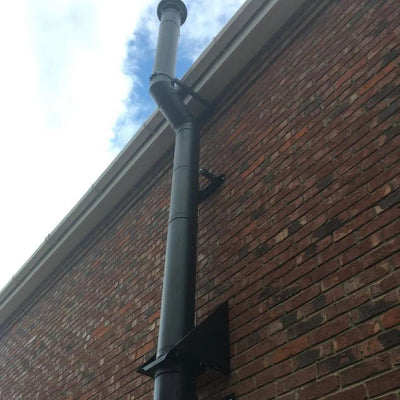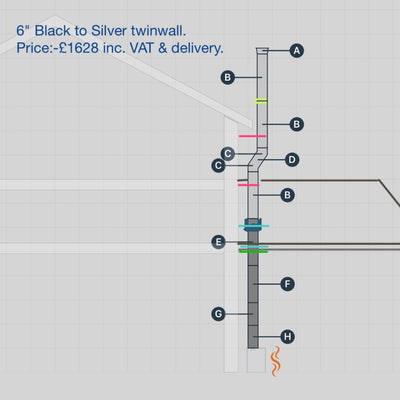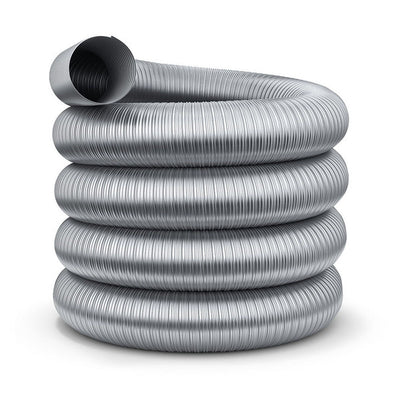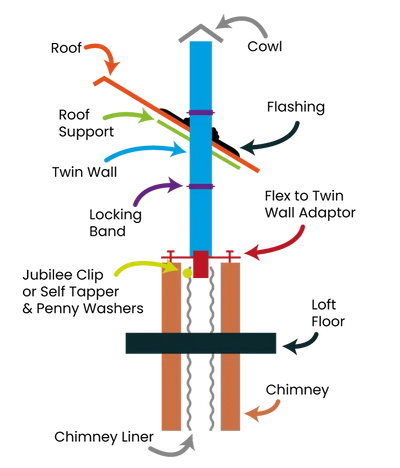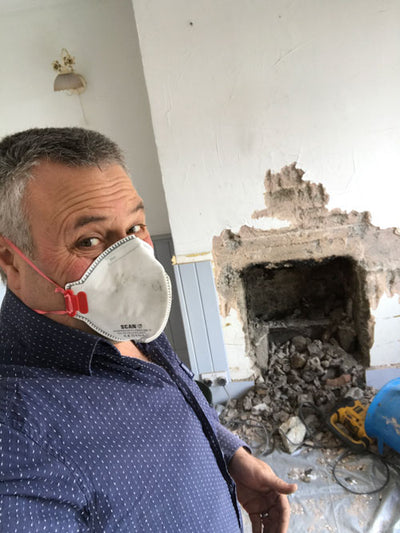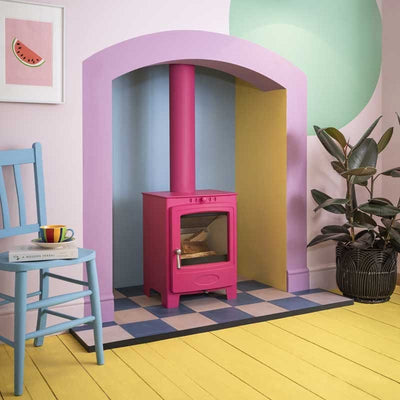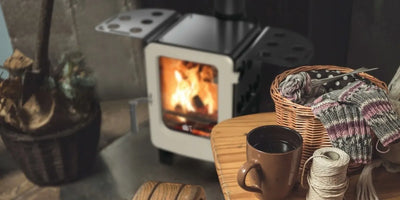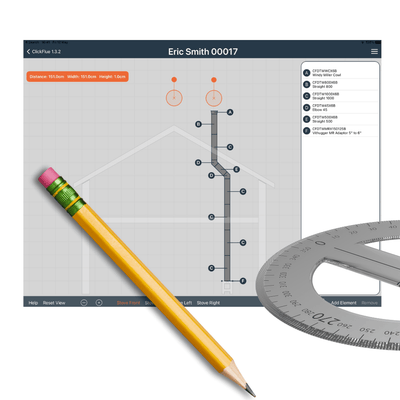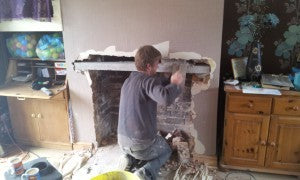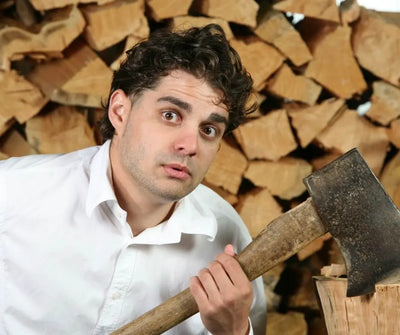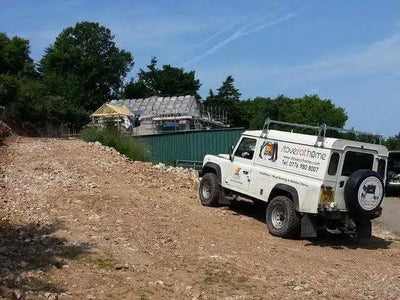How to choose & measure chimney liner for a wood burning stove (includes infographic)
5 mins
How to choose & measure chimney liner for a wood burning stove (includes infographic)

How to choose and measure for your chimney liner
Should I buy cheap chimney liner
You have chosen your wood-burning stove and have quite wisely decided to install a chimney liner. Bravo! The next step is knowing how to choose and measure for your chimney liner.
Consider the following:
Never go with cheap chimney liner. Simply put, when it comes to chimney liner, cheap is *not worth it*. Cheap flue liner can unfurl easily whilst fitting and is incredibly sharp and dangerous. Once unfurled it can become stuck in your chimney.
The layers inside cheaply-built liners break apart whilst the liner is being dragged through a chimney, creating "ledges" inside the lining. These ledges slow down the flow of gases and allow corrosive substances to get a grip - speeding up the corrosion process.
You will typically come across cheap liners on internet auction sites or through search engine adverts: very professional looking whilst overpromising on quality for a very low price.
Do not be fooled by the guarantees and accreditations on many websites - quality chimney liners are not to be found at the cheaper end of the spectrum.
Julian Patrick, author of The Stove Fitter's Manual, recommends Silvacore chimney liner (manufactured in the uk using German technology). The layers do not separate however difficult the install - no ledges.
What diameter chimney liner should I buy?
Chimney liners can be purchased in a variety of diameters - from 5 to 9 inches. However, a stove will rarely require anything other than a 5" or 6" diameter liner.
The smallest diameter of liner allowed in the uk is 5". One can fit a 5" liner if the manufacturer does not state otherwise and the stove is approved by Defra to burn wood in a smoke control area and the stove collar is not above 5" to start with.
If a stove is not approved by Defra to burn wood in a smoke control area then the minimum liner diameter is 6" (whether you are in a smoke control area or not).
All of the stoves sold on our website are Defra approved for smoke control areas.
A manufacturer's installation manual overrides any rule if it is more stringent than building regulations. So if stove has a 5" collar and the manufacturer insists it be connected to a 7" chimney liner - then that is what you do. This is very rare and we will always mention this on a stove product page - highlighted!
Never go down in size along the flue route as the bottleneck will cause smoke to back up (and you will be flouting building regulations). So, if your stove has a 6" collar, it should never have a flue liner size that's less than 6".
If you want to fit a larger diameter than the minimum then you can. If, for example, your stove is allowed to have a 5" liner, then you can fit a 6": or even a 7". It is advised though that the liner diameter is as close to the stove collar diameter as possible bearing regulations in mind as the stove will likely perform at its best at that diameter.
Why fit a 6" liner when you are allowed to fit a 5"? Well, a liner that's heavily coated with soot will start to lose internal diameter, so a larger diameter liner will last longer between sweeps, right? Better not to let soot build up is the best practice. Burn well seasoned and dry wood and avoid slumbering and there will be little or minimal soot coating your liner.
5" liners are the number one choice for many installers as they hardly ever get stuck whilst being dragged through a chimney. Julian patrick, author of the stove fitter's manual says: "In my experience 6" liners can be a pain. About 33% prove a pig to install, whilst 25% may not fit down the chimney without having to open up the chimney to aid the liner through the bends. I almost never had any problems with 5" liners".
Some chimneys have such a large diameter that the choice can be left to the installer.
Which chimney grade liner to choose - 316 or 904?
To put it simply, this is a matter of quality - the 904 grade boasts a higher grade of stainless steel than the 316 variant and is less likely to corrode, from the inside, over time.
If you're looking for belt and braces quality, or will likely burn smokeless fuel/coal, or consider yourself a "heavy user", then choose 904 grade.
The 316-grade liner is ideal if you are a "Light to medium user", on a budget and intend to burn dry/seasoned wood only.
Silvacore 904-grade liner has an extra layer of 316 on the outside; the inner 904 lining protects your chimney flue from corrosives while the outer 316 layer acts as an outer barrier to fight against rust.
It is important to know that liners do not last forever. If you burn wood contaminated with paint/varnish etc. Then the corrosives from the paint will shorten the life of the liner - often quite dramatically.
Do choose 904-grade chimney flue liner if you are installing a boiler stove. A boiler stove is more likely to be slumbered overnight; any stove that is likely to be slumbered will benefit from a 904 grade liner. Slumbering results in incomplete combustion of potential corrosives.
How much liner to order?
Measure from the floor of the room where the stove will sit to the top of the chimney pot. This method allows plenty of extra margin to cover any bends or small measuring errors.
Here's how you work out this measurement:
On gable ends some installers actually stand outside the building and count the bricks!
You will also need to add the thickness of any floors (usually a figure of 50cm per floor will work so an extra one metre if the property has two floors).
Height of downstairs room (usually 2.5m or 3m) + height of upstairs room (usually same as downstairs) + height of loft to apex of roof (e.g. 2m) + height of chimney stack above apex (e.g. 1m).
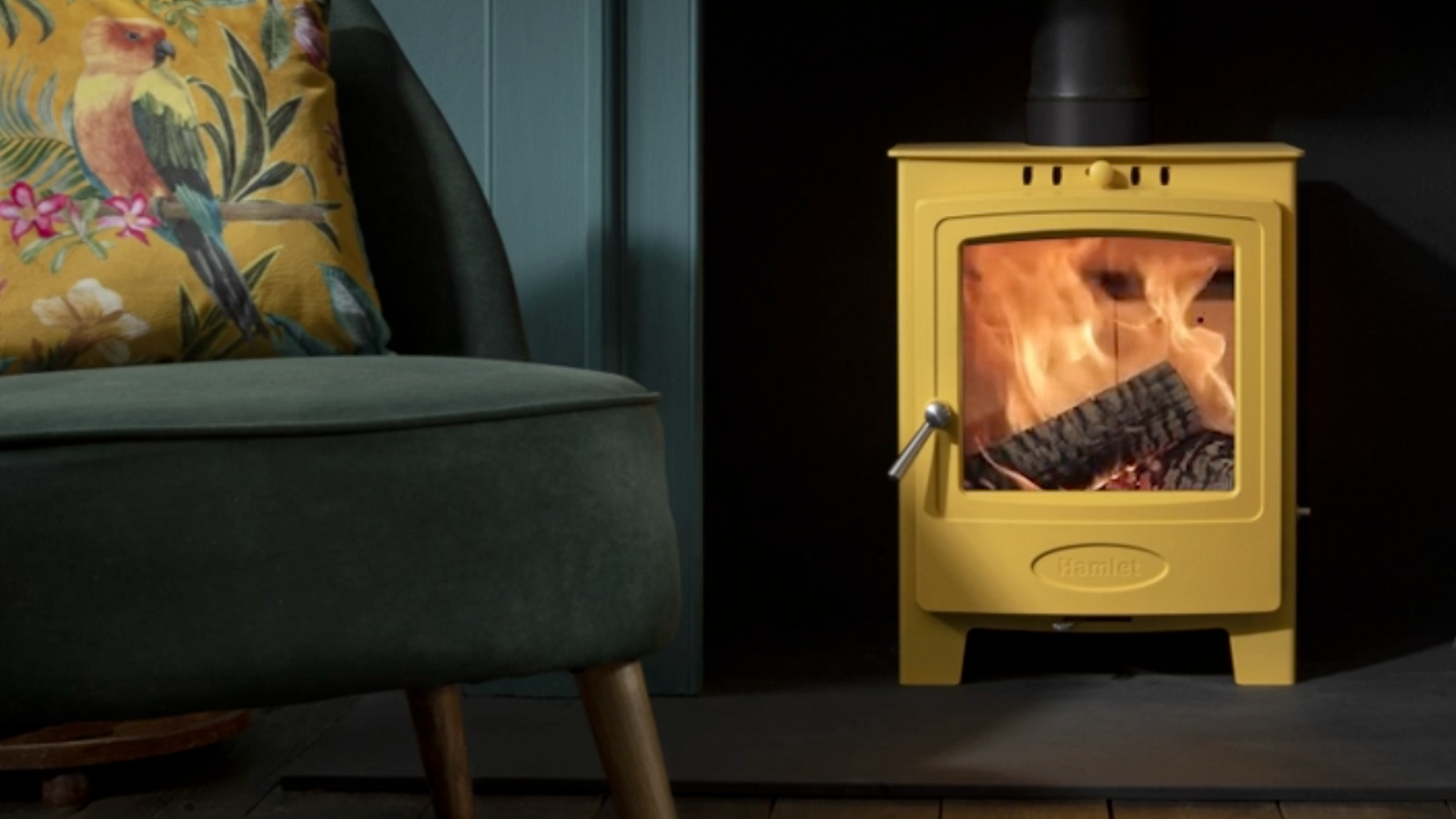
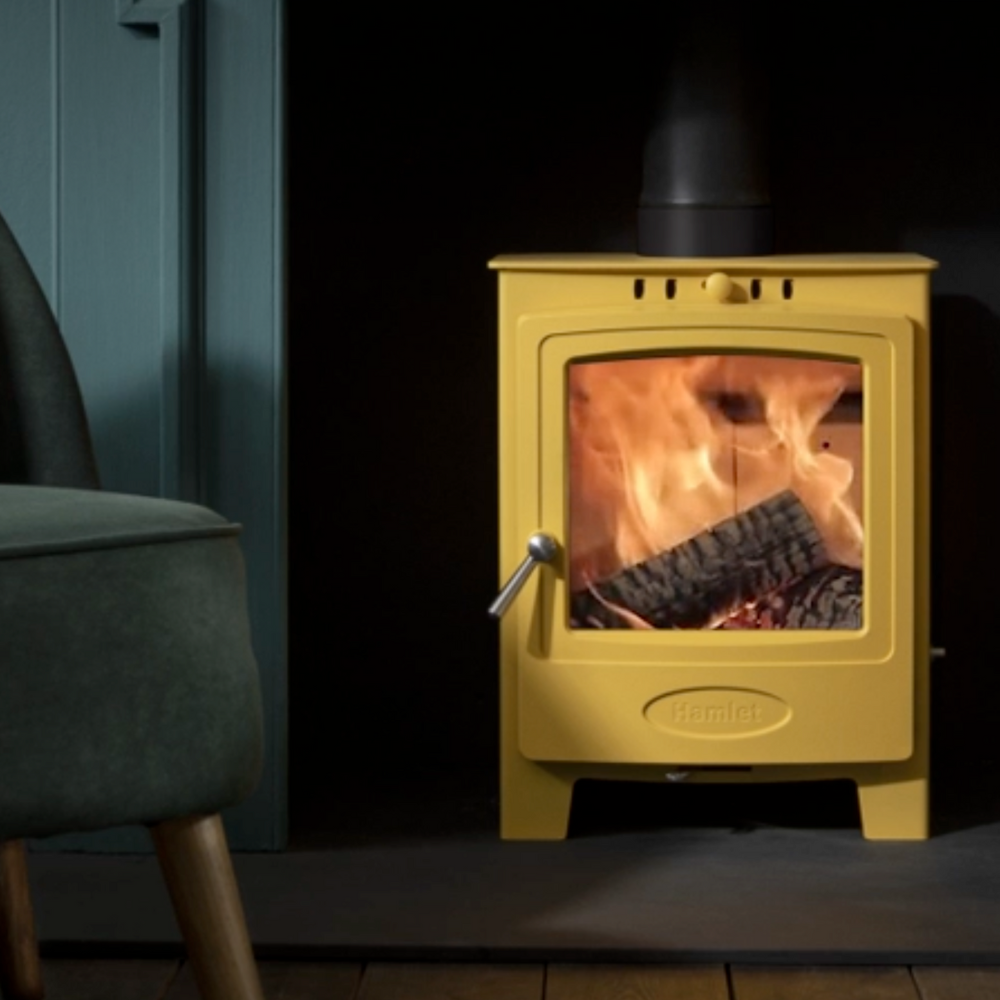
How to choose chimney liner & how much to buy


Installing a stove in a fireplace - what do I need?
FAQs
See all FAQsCosts correct as of April 2023:
Approx. costs if you have a chimney and fireplace ready to use: £750-£1,000 (save £500 by self-installing).
Approx. costs if you have a chimney but need the fireplace "opening up": £1,600-£2,200 (save £1200 by self-installing).
Approx. costs if you do not have a chimney and need a clip-together flue: Shed £475-£700. Bungalow £1500. 2-storey house £2500. Save £1,000-£1400 by self-installing.
Above figures include labour and materials but no appliance.
We, of course, advise you to purchase your stove and materials from Stovefitter's to ensure quality goods are installed (some installers use budget materials to increase margin). If you buy your stove from us (rather than your local small shop or installer) we have a lot more power when approaching manufacturer's with a warranty issue. Why is that? Because we buy many hundreds of stoves a year from these brands.
We do not fit stoves.
But we know a few who do!
Google: Hetas installers
Hetas are the trade body of registered UK installers.
Most installations will require that you slide a chimney liner down your chimney (flexible metal tube 5" or 6" in diameter). Do you have a narrow chimney and want to lessen the risk that a liner might not go down your chimney? Then make sure your chosen stove can use a 5" liner.
Must I line my chimney? Best read this article but most likely the answer is yes. Do I have to fit a chimney liner?
DEFRA-Exempt wood burning stoves with a 5″ collar can usually be fitted to a five inch liner rather than the usual 6″ minimum, making the installer's job much less stressful.
ALL OF THE 5KW STOVES WE SELL CAN BE FITTED TO A 5" CHIMNEY LINER.
I seriously suggest any self installer fits a 5" liner unless they know their chimney is large enough for a 6"!
What is the best chimney liner? Silvacore 904 (we sell it so of course we will say that ;-). What is the best chimney liner?
Useful links
Will your stove require an air vent within the room (some stone walls are very difficult to drill)?
5kW or under and wood burning stoves often do not require an air vent (new builds always require an air vent).
Useful links
What is the maximum output in kW of your "5kW" wood burning stove? The majority of manufacturers just specify the “nominal output” and this figure means very little in real life. The nominal is a figure the manufacturer chooses to sell the stove at - the stove is capable of reaching at least this output with one fuel load. Nominal means "capable of". But it is not the maximum.
Check out the size of the area where the logs will go (firebox size) as this varies enormously. The kW output is completely dependant on the amount of logs burning at any one time - more logs burning equals more heat. If you can fit three logs in stove A and just two logs in stove B then stove A will be capable of throwing out 33% more heat.
DO NOT TRUST MANUFACTURERS’ kW RATINGS as manufacturers specify what output they desire to sell the stove at and testing allows for much “playing with the figures”. This is why you can get very small 5kW stoves (e.g. Aga Little Wenlock) and very large 5kW stoves (e.g. DG Ivar 5 by Dik Geurts which is actually rated 5kW but has a MUCH larger firebox than the Ekol Crystal 5 by Ekol Stoves). A Crystal 5k might get to 5kW and not be capable of any higher whilst a DG Ivar, despite being rated at 5kW, can get to 8kW with a full fuel load.
Note that, over time, one might damage the internal firebricks of a stove by running at a higher load than the manufacturer's suggest. Firebricks are easily replaceable.
Useful links
Will your wood burning stove fit in your recess WITH the required air gaps around it? This is obviously not an issue if your stove will be freestanding.
Air gaps to non-combustible materials (brick, stone etc.) are usually "as close as you like" legally but manufacturers will sometimes specify a recommendation. This recommendation is there to allow heat to escape from the recess into the room - so you get the heat benefit rather than the heat soaking into the building structure and being lost. If no gap to non-combustibles recommended then we suggest 50-100mm air gap left and right of stove, 50mm behind and 100mm above.
Are you in a Smoke Control Area (usually built up areas)?
Choose your stove accordingly.
A stove must be DEFRA-Approved if you wish to burn wood in a smoke control area.
ALL OF THE STOVES WE SELL ARE DEFRA APPROVED FOR SMOKE CONTROL AREAS.
In simple terms if a stove has an efficiency rating of 70% then 30% of the heat from your logs goes up the chimney.
If a stove has an efficiency rating of 90% then only 10% goes up the chimney.
So think of this in terms of how many logs you have to chop/buy.
Example: A Saltfire Peanut 5 by Saltfire Stoves in Dorset has an efficiciency of 80%.
A tall chimney (6m or more) that is lined will be happy with an efficient stove.
Efficiency importance can be said to be overrated and anything between 75% and 85% is fine. Go much higher and performance can actually suffer (smoke in room when opening door to reload, blackening of glass).
Many modern stoves can go on 12mm thick hearths. Others require full, 5″ thick constructional hearths. All of the stoves we sell state whether or not a 12mm hearth is suitable.More about hearths for wood stoves here.
Helpful links
Can you can talk to somebody on the phone should you need to after the wood burning stove has been delivered, especially if you are self installing? Will the staff at “wesellzillionsofstoves.com” be able to assist with any installation issues? What if there are any problems after install?
Do yourself a favour before ordering stoves or materials on the Internet: Go to Trustpilot and type in the company name before you buy. Some companies advertising at the top of search engines are not good news - check for yourself.
When striving to find thebest 5kW wood burning stovesyou will likely be bewildered by the choice. There are many to choose from. The question I get asked most in our shop is “why should I pay <£1,000> for this one when this other one is just <£500>?”. Here is the very simple answer:the cheaper wood stoves are made in Chinaor Eastern Europe whilst the more expensive are made in Western Europe (or sometimes the USA). Here are a few examples where a more expensive stove might excel over a cheaper stove:
- Aesthetics (more time spent on design)
- Hinges (sometimes hidden on more expensive stoves)
- Better quality glass
- Thicker steel (longer life)
- Improved door locking mechanisms
- Longer warranty
- Improved controllabilty of flame due to more resource invested on design of air flow within stove
- Brushed steel fittings instead of cheapy chrome look
Open and close the door on a cheap Chinese stove. Then open and close the door on a DG stove, Arada stoves, Woodford stoves, Hamlet stoves or Saltfire stoves. You’ll understand the difference.
Stove pricing reminds me of wine pricing. A £20 bottle of wine is not double the quality of a £10 bottle of wine (the drinking experience might be improved by 20% as an example). We are talking “the law of diminishing returns here. They are all “fire in a metal box” at the end of the day.
Yes. However, there are specific regulations and restrictions in place to address air pollution concerns, particularly in areas designated as Smoke Control Areas. In these areas, only approved "smokeless" fuels or exempt appliances, such as Defra-approved wood-burning stoves, can be used. These stoves are designed to burn wood more efficiently and produce fewer emissions.
All the stoves we sell are DEFRA approved and Eco-design approved and suitable for all areas of the UK.
Terminology
View all TerminologyA stainless steel tube, slides down a brick/stone chimney to provide a smooth and safe route for smoke.
All of our stoves are approved by DEFRA to burn wood in all UK locations including Smoke Control Areas (towns and cities). Not all stoves are, so be careful if buying elsewhere.
All of our stoves are ECODESIGN approved to be sold in the UK. Not all stoves are, so be careful if buying elsewhere. ECODESIGN is mandatory by law since January 2022.
The base your stove sits on.
If the chimney is the polo mint then the flue is the hole.
More buying guides
View All
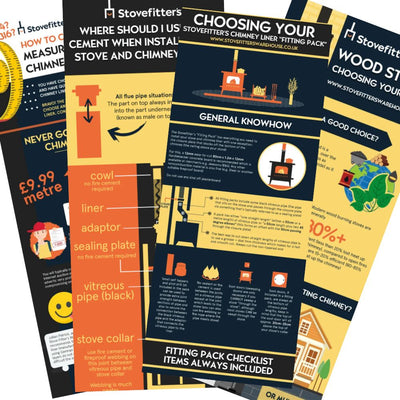
How to choose a wood burning stove for your property (includes infographic)
Infographics

What size wood stove do I need? Don't let manufacturers fool you!
Buying Guides
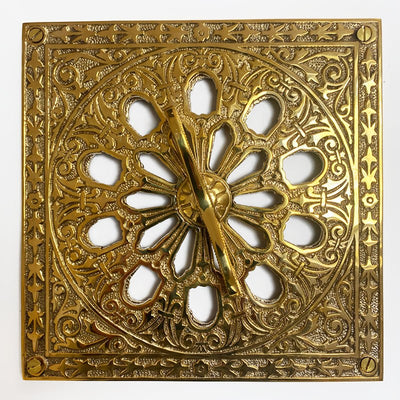
Do I need an air vent for a wood burning stove? If I do not bother?
Buying & DIY

Knowledge Tree: Process of buying and installing a wood burning stove
Buying & DIY
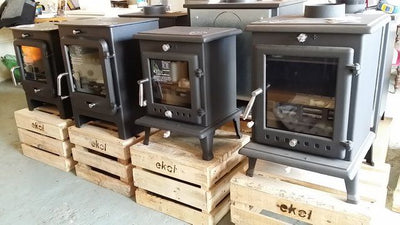
Chinese wood burners – should I buy one or are they all crap?
Buying Guides

What else do I need to buy to install a wood burning stove?
DIY Guides

Infographics for wood burning stove purchase and install
Infographics
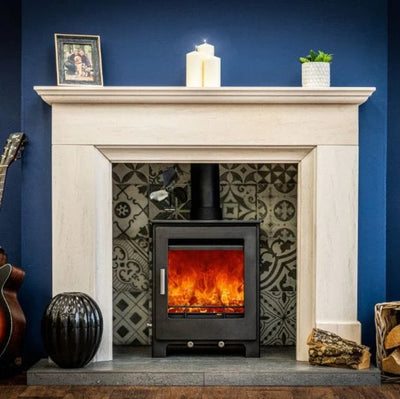
Wood burning or multifuel stove? A stove fitter decides.
Buying Guides
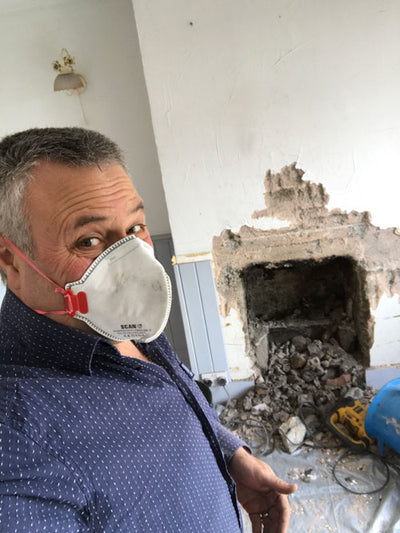
A few words from Julian
Buying & DIY
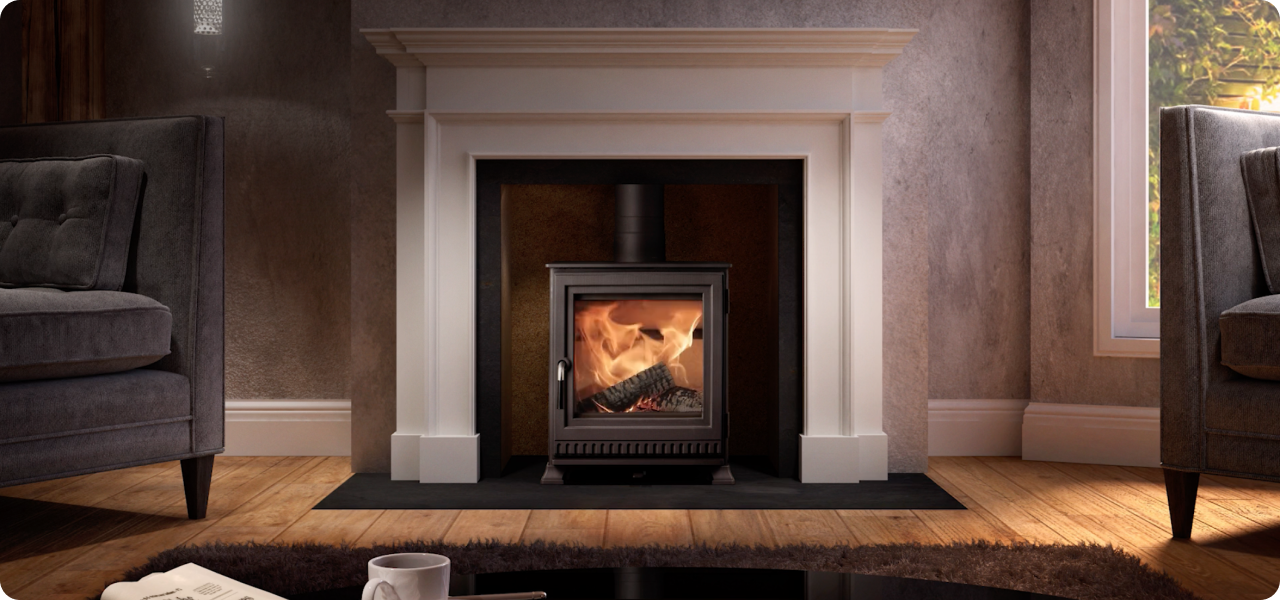
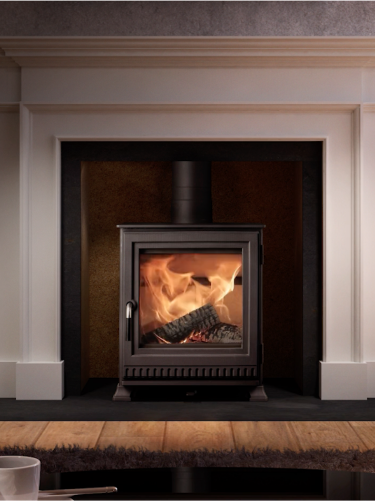
Find my perfect stove
Answer 3 simple questions and we will show you the best Stoves for your space.


